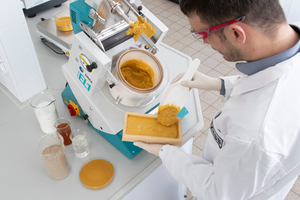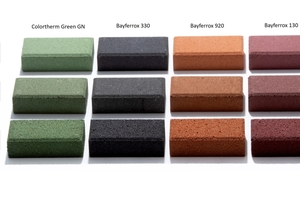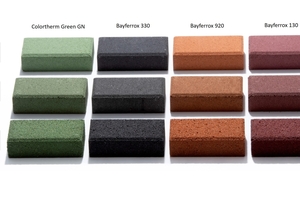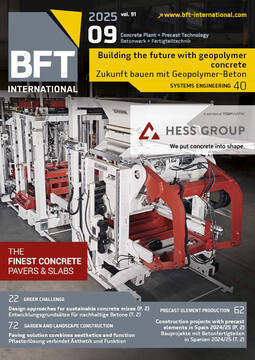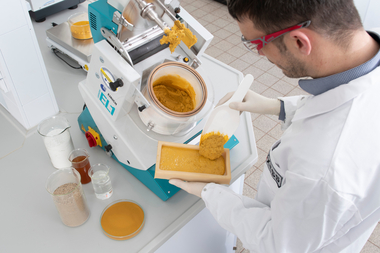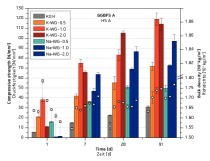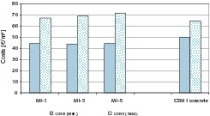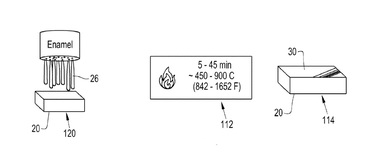Geopolymers instead of cement – options for coloring
environmentally friendly construction products
The use of geopolymers has been followed with growing interest in the construction industry for years. They are increasingly used in the manufacture of various construction products because they are considered an important raw material for reducing the carbon footprint of these products compared to traditional cement-based concrete.
But what about coloring these materials? The coloring of surfaces is an important topic in the construction industry: customers are demanding colored, customizable products. The classic cement gray goes contrary to this desire and is not a viable alternative.
In the recent past, there have been a number of uncertainties and indications of possible problems with some geopolymer systems regarding coloring and its durability. Pigment experts from Lanxess and Harold Scholz, together with Rhein-Chemotechnik, have therefore addressed this issue in a cooperative research project. The initial results, which focus on the use of iron oxide pigments, are now available.
Different Systems – Different Reactions
The term geopolymer is often used in everyday language to refer to alkali-activated materials, although strictly speaking „geopolymer“ only describes one subcategory of such systems. It is therefore useful to distinguish between the systems: on the one hand, there are the calcium-rich, alkali-activated materials (AAM), which consist of activatable blast furnace slags and fly ashes; on the other hand, there are more specialized geopolymers, which are produced with low-calcium metakaolins. Both systems are very different in terms of their chemical composition and the structures formed. The result: they also behave differently when it comes to coloring.
In contrast to alkali-activated materials and cementitious products, metakaolins and clays as well as geopolymers produced from them differ in their interaction with iron oxide pigments. The difference: alkali-activated materials such as blast furnace slag and ash are characterized by their pozzolanic properties, which, similar to cement-based concrete, form calcium silicate hydrate (CSH) phases. Due to the electrostatic interactions, the iron oxide pigments can permanently attach themselves to the resulting CSH phases. These interactions can vary depending on the system used and possible additives.
Research Results Confirm Stable Coloring
Therefore, the research project examined the coloration and its durability in alkali-activated materials and geopolymers. The cement-based counterpart was also produced in the experiments as a reference. The production was carried out according to the specifications of DIN EN 12878. In addition, activators and admixtures from Rhein-Chemotechnik were used in the production of the samples made of geopolymers and alkali-activated materials. After the samples had been produced, they were evaluated colorimetrically and their concrete technological properties and the durability of the coloration to natural and accelerated weathering were determined in further tests.
The results are positive. All systems showed good and stable coloration, which was also confirmed in the weathering tests (Image 1). However, differences arose during the production of the samples. Alkali-activated materials could be mixed and processed similarly to cement-based patterns, but they cure much faster. The geopolymer system offers a considerably longer time frame for processing. Nevertheless, the preparation is more complex, since the metakaolin must first be opened up with the activator and then this paste is filled with aggregates.
However, these differences only affect the mixing and setting behavior, but not the coloring itself. All of the binder systems examined could be colored easily and durably. In the next step, specialists from the TU Dresden will be involved in the research collaboration in order to obtain more detailed information about the structural design and differences in the technical performance of the systems.
CONTACT
Lanxess Deutschland GmbH
Kennedyplatz 1
50569 Cologne/Germany
+49 221 8885-0

